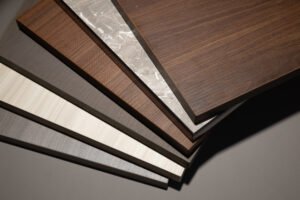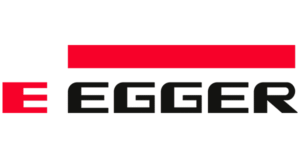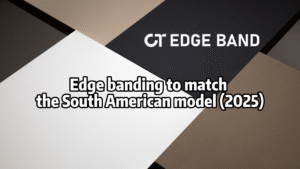I see buyers worry about toxins. I know failed tests block sales. I show clear steps to meet global green rules.
I compare global rules (REACH, RoHS, CARB, EN/ISO) and show how CT Edgeband meets them with testing, records, and low-VOC choices.

I will walk you from the big rules to the tests and then to steps you can use. I keep each step practical and short.
Understanding International Environmental Standards in the Furniture Industry?
I see many rules. I hear confusion. I will break them down so you can act.
International standards set limits on chemicals and emissions, and guide company systems like ISO 14001. Knowing them helps you sell in Europe and North America.

What the main rules cover
I look at rules by what they do. I group them by function.
- REACH controls chemicals that go into products. It forces registration and sometimes bans.
- RoHS limits hazardous substances in electrical goods. It often appears in panel and accessory contexts if electronics are included.
- CARB and TSCA set formaldehyde limits for composite wood. They affect panels and goods that use MDF, PB, or plywood.
- ISO 14001 guides how a company manages environmental performance. It helps firms turn one-off checks into a system.
Why these matter for furniture and edge banding
I sell or buy materials. I know buyers care about safety and rules. I know non-compliance blocks market entry. I know regulators can force recalls. I also know a management system reduces mistakes and cost over time.
Quick comparison table
| Standard / Rule | Scope | Who enforces |
|---|---|---|
| REACH | Chemicals management across EU | ECHA / EU bodies |
| RoHS | Restricted substances in EEE | EU member states |
| CARB / TSCA | Formaldehyde emissions from composite wood | California / US EPA |
| ISO 14001 | Environmental management systems | Certification bodies |
I recommend you map each rule to your materials and processes. Use this map to plan tests and documents.
How Environmental Standards Apply to Edge Banding Materials?
I find raw materials vary a lot. I worry about adhesives and pigments. I explain which tests apply.
Edge banding is checked for formaldehyde, VOCs, phthalates, heavy metals, and other restricted substances. Tests use chamber and analytical methods such as EN 717-1 and EN 16516.

What gets tested and why
I list the key risk areas for edge banding.
- Formaldehyde: This comes from panels and sometimes adhesives. Regulators measure it with chamber methods. EN 717-1 is a common chamber method for wood panels.
- VOCs: These include solvents and additives that off-gas. EN 16516 and related methods measure VOC emissions from construction and furnishing products.
- Restricted chemicals: This group includes certain phthalates, PFAS, and other SVHCs under REACH. Tests use lab analysis like GC-MS or ICP-MS.
- Heavy metals and RoHS substances: If the edge contains functional electronics or metal parts, RoHS may apply. Otherwise, buyers still ask for heavy-metal screening.
Typical test chain for an edge banding product
I follow a practical test chain. I explain it step by step.
- I ask suppliers for SDS and material declarations.
- I run a restricted substances screen in the lab.
- I test a finished panel assembly in a chamber if emissions are a concern.
- I keep batch records and test reports for each shipment.
Structured view (table)
| Test focus | Method | What it shows |
|---|---|---|
| Formaldehyde | EN 717-1 chamber / CARB/TSCA test | Emission level from wood or adhesive |
| VOCs | EN 16516 emission chamber | Total VOC profile and key compounds |
| SVHC (REACH) | Lab analysis (GC-MS, LC-MS) | Presence of substances of high concern |
| Heavy metals | ICP-MS | Levels of Pb, Cd, Hg, etc. |
I work with labs that understand furniture rules. I do full assembly tests when the product will be used indoors. This reduces surprises at the customer site.
Key International Certifications for Eco-Friendly Edge Banding (REACH, RoHS, CARB, etc.)?
I know certificates open doors. I also know they require proof. I explain the main certificates.
The core certifications are REACH for chemicals, RoHS for restricted substances in EEE, CARB/TSCA for formaldehyde from composite wood, and ISO 14001 for an environmental management system.

Short guide to each certificate
I describe what each certificate means and who needs it.
- REACH: I check for SVHCs and candidate list substances. I keep supplier declarations. REACH is an EU rule for chemical safety.
- RoHS: I verify only when the product or its accessories fall under EEE. I screen for lead, mercury, cadmium, PBBs, PBDEs, and certain phthalates.
- CARB / TSCA: I test panels and finished goods that include composite wood. Products sold in California or to clients requiring US compliance must meet these limits.
- ISO 14001: I use this to make sure my company keeps doing the right checks. The standard does not set chemical limits. It makes processes repeatable.
Comparison table
| Certification | Covers | Why it matters |
|---|---|---|
| REACH | Chemicals of concern, registration | Limits SVHCs and forces substitution |
| RoHS | Restricted substances in EEE | Needed if product is EEE or has EEE parts |
| CARB / TSCA | Formaldehyde emissions from composite wood | Required for CA and US markets |
| ISO 14001 | Environmental management system | Shows you run a repeatable EMS |
I advise distributors to ask for the specific test reports. I advise manufacturers to keep a living file with SDS, lab reports, and supplier RSLs.
Environmental Execution Standards Adopted by CT Edgeband?
I run CT Edgeband. I set clear rules. I list practical steps we follow.
At CT Edgeband, I use a supplier RSL, batch testing, third-party labs, low-VOC adhesives, and an ISO-style environmental plan to meet global rules.

My practical program at CT Edgeband
I break our program into four parts. I explain each in plain terms.
1. Supplier control and RSL
I maintain a restricted substances list (RSL). I require each raw material supplier to sign it. I ask for SDS and a material declaration with each shipment. I check supplier history and audit them if needed.
2. Incoming and batch testing
I test incoming rolls of edge banding for SVHCs and heavy metals. I sample finished parts for VOC and formaldehyde when customers request indoor use certification. I use accredited third-party labs for emission chamber tests.
3. Production controls
I use low-VOC hot-melt and water-based adhesives where possible. I track glue lots and machine settings. I log process parameters and keep a nonconformance register. I train operators on contamination prevention.
4. Management and certification
I align our system with ISO 14001 principles. I keep records for audits and customer requests. I use corrective actions to close gaps quickly.
How these map to the standards (table)
| Practice | What I do at CT Edgeband | Maps to |
|---|---|---|
| Supplier RSL | Signed RSL, SDS on file | REACH, customer due diligence |
| Batch testing | Lab checks for SVHC, metals | REACH, RoHS screening |
| Emission testing | Chamber tests when needed | EN 717-1 / EN 16516, CARB/TSCA |
| EMS | Documented processes and audits | ISO 14001 |
I once found a pigment batch with an undeclared additive. I stopped the line. I tested the batch. I replaced the supplier. I kept full records. This avoided a customer rejection. This shows why records matter.
Why Compliance with Environmental Standards Benefits Distributors and Manufacturers?
I have seen compliant products sell faster. I have seen non-compliance cause returns. I list the clear business benefits.
Compliance gives market access, reduces recall risk, and builds buyer trust. It also helps you win tenders and avoid legal fines in regulated markets.

Business reasons to comply
I explain the main commercial gains.
- Market access: I can ship to EU and US only if I meet their rules. Buyers check test reports and certificates.
- Reduced risk: I lower the chance of a recall or blocked shipment by testing early. I save money by avoiding emergency rework.
- Trust and price: I win repeat business when buyers trust my documentation. I can command a better price for reliable supply.
Evidence and action table
| Benefit | Evidence | Action I recommend |
|---|---|---|
| Market access | CARB/TSCA and REACH restrict sales without compliance | Test early, keep reports |
| Risk reduction | Lab reports stop surprises at customs | Batch testing and traceability |
| Brand trust | Buyers ask for certificates before trial orders | Share full test packets |
I advise distributors to ask for the exact test method and lab accreditation. I advise manufacturers to make testing part of the production plan, not an afterthought.
Conclusion
I compare the rules, explain tests, and show the steps I use at CT Edgeband to meet global standards.
Sources and links
- ECHA — Understanding REACH. https://echa.europa.eu/regulations/reach/understanding-reach. echa.europa.eu
- European Commission — RoHS Directive overview. https://environment.ec.europa.eu/topics/waste-and-recycling/rohs-directive_en. single-market-economy.ec.europa.eu
- California Air Resources Board (CARB) — Composite Wood Products FAQ. https://ww2.arb.ca.gov/resources/documents/consumer-faq. ww2.arb.ca.gov
- EPA — Formaldehyde emission standards (TSCA Title VI). https://www.epa.gov/formaldehyde/formaldehyde-emission-standards-composite-wood-products. US EPA
- EN 16516 / VOC emissions (background). https://www.umweltbundesamt.de/en/topics/economics-consumption/products/building-products/european-testing-procedure-emissions-from. Umweltbundesamt
- EN 717-1 — Formaldehyde chamber method (overview). https://furnitest.com/testing/determination-of-formaldehyde-release/standards/en-717-12004/. furnitest.com
- ISO — ISO 14001 Environmental management systems. https://www.iso.org/standard/60857.html. iso.org





